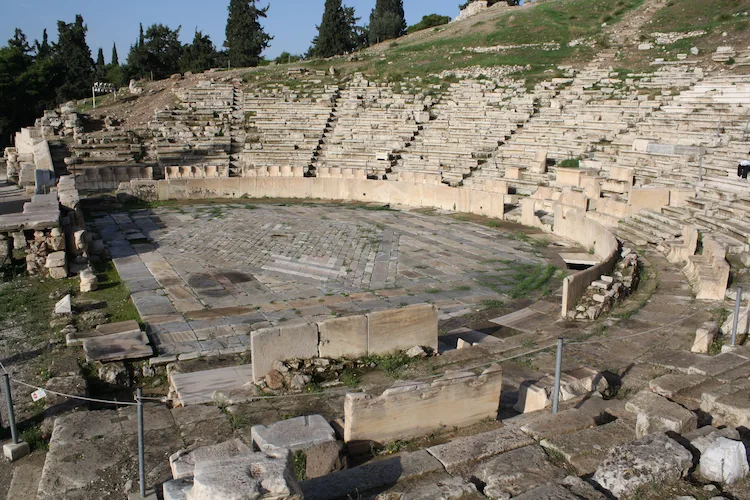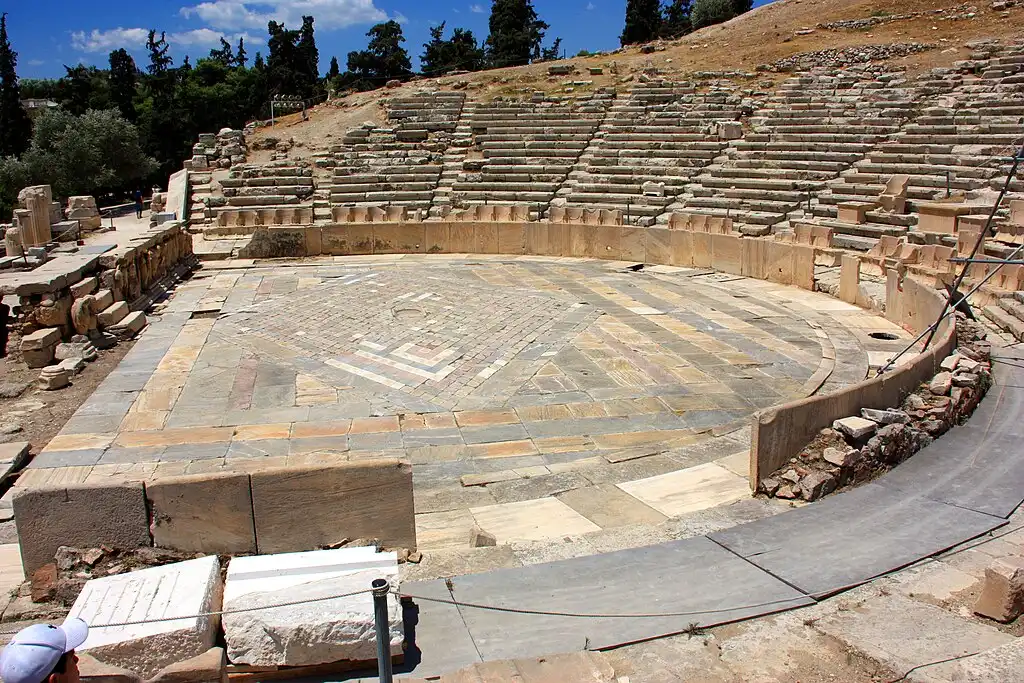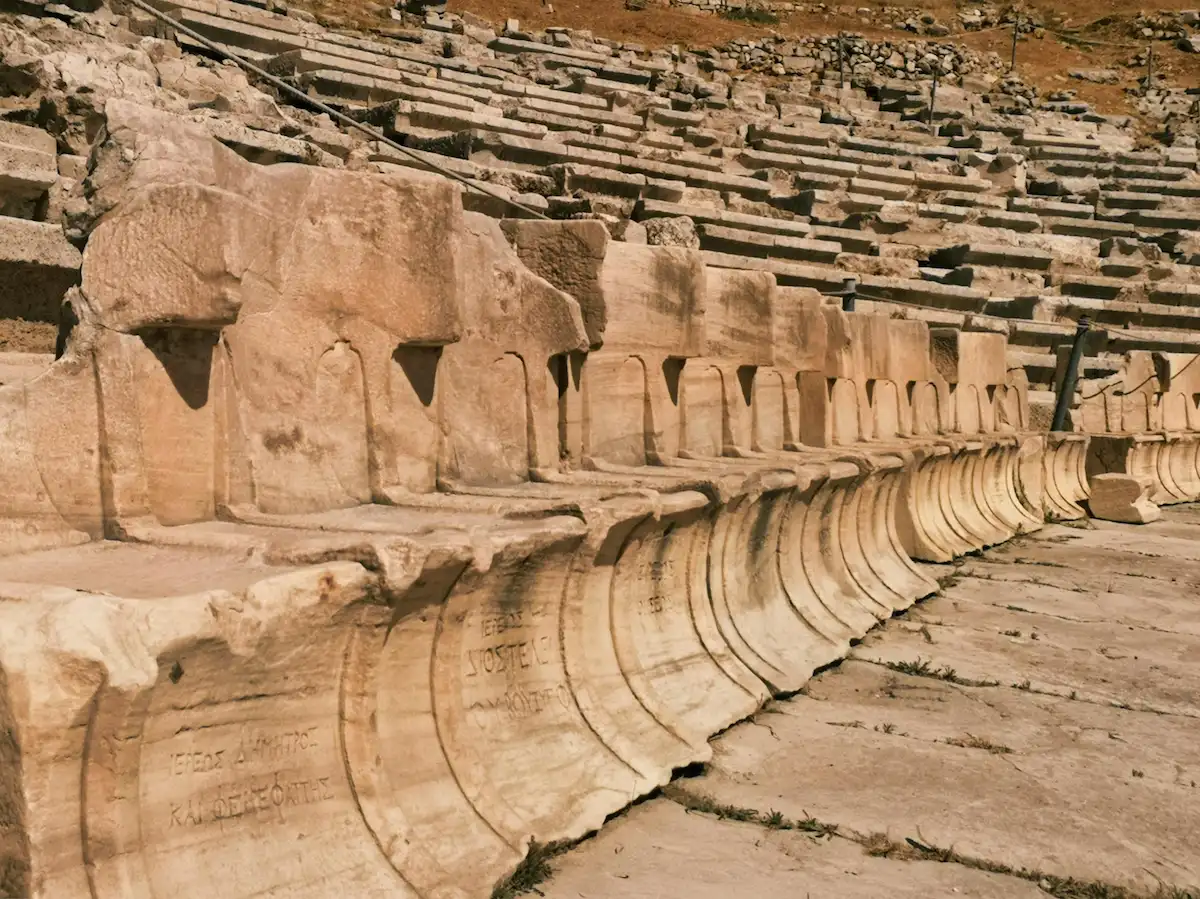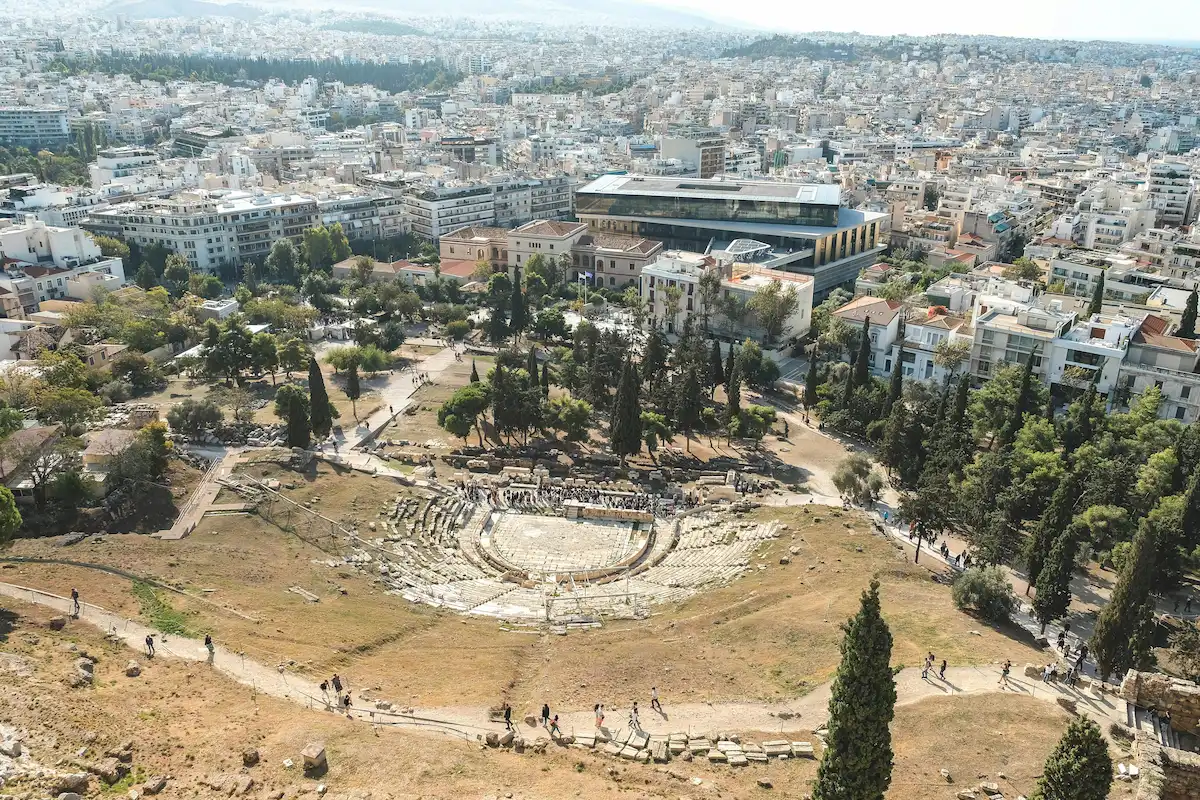Find information about the main attractions in the Acropolis

No events or performances are held at the Theater of Dionysus. These events, usually concerts, are typically held at the Odeon of Herodes Atticus, but it is currently undergoing renovations that will last three years. Both sites are open to tourists.
The Theater of Dionysus is one of the most important archaeological sites in Athens, Greece. Located at the foot of the Acropolis, it is considered the birthplace of Greek drama and the oldest theater in the world. It is named after the Greek god Dionysus, who was the patron of the theater and wine. The theater was first built in the 6th century BCE, and it underwent several renovations and expansions over the centuries. At its peak, it could seat up to 17,000 spectators.
The theater was a central part of ancient Athenian culture and played an important role in the development of Greek drama. The city held an annual drama festival called the City Dionysia, which featured dramatic competitions between playwrights. The theater was also used for other cultural events, such as religious ceremonies and political speeches.



The Theater of Dionysus was originally built in the 6th century BC and underwent many renovations over the centuries. It was named after Dionysus, the Greek god of theater and wine. In the 5th century BC, the theater was rebuilt and expanded to accommodate up to 17,000 spectators. Many famous Greek plays, including those of Aeschylus, Sophocles, Euripides, and Aristophanes, were first performed here.The theater’s importance waned during the Hellenistic and Roman periods, and it fell into disrepair. It was rediscovered and partially restored in the 19th century. Today, visitors can see the remains of the theater and imagine the grand performances that once took place on its stage.
The Theatre of Dionysus has a fascinating timeline that’s actually more complex than you might think at first glance.
The earliest version of this ancient Greek theater dates back to around the 6th century BC, likely established when dramatic competitions were first introduced in Athens around 534 BC. But that initial structure was quite simple, basically a wooden stage with earthen seating carved into the southern slope of the Acropolis.
The theater you’re probably picturing, the one with proper stone seats and architectural grandeur, came much later. The major transformation happened in the 4th century BC, specifically around 330-320 BC during the administration of the statesman Lycurgus. This is when the Athenians decided to rebuild the whole thing in stone, creating a permanent structure worthy of the city’s cultural importance. Think about it: by this time, Athens had already produced playwrights like Sophocles, Euripides, and Aristophanes. The theater needed to match that legacy.
The Theater of Dionysus was built into a natural hollow on the southern slope of the Acropolis, providing excellent acoustics. The theater was divided into three main sections: the orchestra, the skene (stage), and the audience seating area. The orchestra was in a circular area in front of the stage where the chorus performed. The skene was the stage where the actors performed, and it featured a raised platform and a backdrop decorated with painted scenery. The audience seating area was divided into 13 sections, with the first section reserved for important people and the rest open to the public.
The Acropolis ticket grants visitors access to the archaeological site of the Acropolis and its slopes, including the Parthenon, the Theater…
The Parthenon is an iconic symbol of ancient Greek civilization and a masterpiece of classi…
On Athens’ Acropolis, there is a stunning and well-known ancient Greek temple called…
